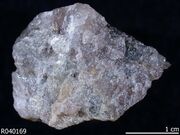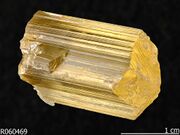Difference between revisions of "Scapolite"
Jump to navigation
Jump to search


| (One intermediate revision by the same user not shown) | |||
| Line 16: | Line 16: | ||
* Streak = white | * Streak = white | ||
* Luster = vitreous | * Luster = vitreous | ||
| − | * Fluorescence = strong pink, yellow or orange | + | * Fluorescence = inert to strong pink, yellow, or orange |
* Pleochroism = moderate to strong blue in pink, purple and violet stones | * Pleochroism = moderate to strong blue in pink, purple and violet stones | ||
| Line 37: | Line 37: | ||
* Gem Identification Lab Manual, Gemological Institute of America, 2016. | * Gem Identification Lab Manual, Gemological Institute of America, 2016. | ||
* Mineralogy Database: [http://www.webmineral.com/data/Scapolite.shtml Scapolite] | * Mineralogy Database: [http://www.webmineral.com/data/Scapolite.shtml Scapolite] | ||
| − | * Wikipedia: [https://en.wikipedia.org/wiki/Scapolite Scapolite] | + | * Wikipedia: [https://en.wikipedia.org/wiki/Scapolite Scapolite] (Accessed Dec 2022) |
[[Category:Materials database]] | [[Category:Materials database]] | ||
Latest revision as of 14:50, 21 December 2022
Description
Any of several fluorescent silicates used as gemstones. Scapolites are transparent to translucent stones that occur in pastel shades of yellow, pink, lavender, purple, and cat's eye. Two types of scapolites are: marialite (sodium aluminosilicate), and meionite (calcium aluminosilicate). Scapolites are mined in Myanmar (formerly Burma), East Africa, Sweden (Kiruna), Australia (Queensland), Canada (Quebec, Ontario-yellow), the U.S. (New York, New Jersey, Pennsylvania) and Mexico (Oaxaca-white).
Synonyms and Related Terms

Infrared spectrum of marialite from RRUFF
wernerite (former group name); marialite; meionite; sodalite; dipyre (now used for the marialite-rich variety); mizzonite (now used for the meionite-rich variety); escapolite (Port.)

Raman spectrum of marialite from RRUFF
Physical and Chemical Properties
- Short, square prismatic crystals
- Cleavage is distinct in two directions
- Fracture = conchoidal to uneven
- Streak = white
- Luster = vitreous
- Fluorescence = inert to strong pink, yellow, or orange
- Pleochroism = moderate to strong blue in pink, purple and violet stones
| Mohs Hardness | 5.0 - 6.0 |
|---|---|
| Density | 2.3-2.8 g/ml |
| Refractive Index | 1.483 - 1.600 |
| Birefringence | 0.005 - 0.038 (increases as RI increases) |
Resources and Citations
- Gem Identification Lab Manual, Gemological Institute of America, 2016.
- Mineralogy Database: Scapolite
- Wikipedia: Scapolite (Accessed Dec 2022)

